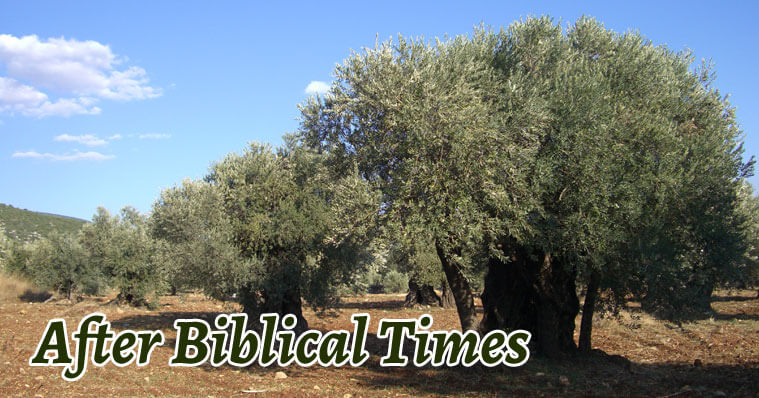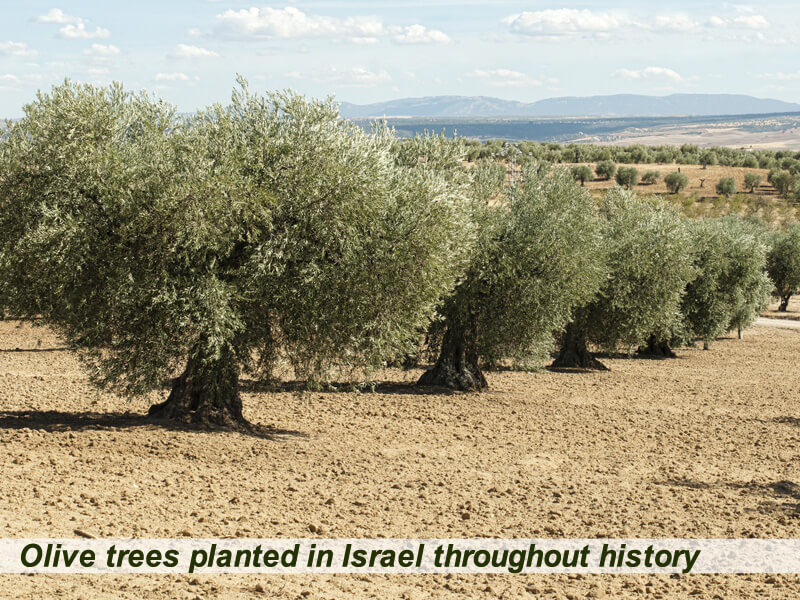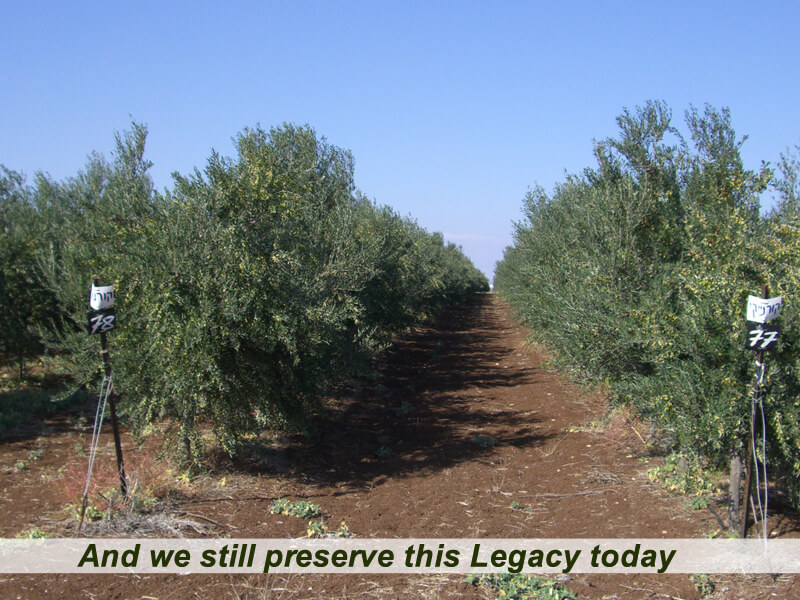
Click Here and get your FREE olive tree in the Land of the Bible!
Olive Trees in Israel After Biblical Times

In the time of the Second Temple, the olive tree was a central element in the economy of Israel. The methods of cultivating the trees in Israel were a model for growers all over the Mediterranean Basin, particularly in Rome, Greece, and North Africa.
In the days of the Bar Kochba rebellion (the second century CE), the Romans cut down most of the olive trees in Judea, to use the wood for their fortresses and ramparts. Hundreds of years later, the Romans realized the importance and the economic contribution of the olive tree, and began intensive planting of olive trees, which continued to the
middle of the fourth century CE, in various parts of the land of Israel, mainly in the Galilee.
Olives and olive oil from the land of Israel are mentioned many times in Roman writings. For example, Aristias, an officer in the Roman army, wrote about the land of Israel, “A great deal of labor is invested in agriculture, the land is overflowing with olives, grain and many fruit trees,” while in other Roman writings we find that “the small olives in the towns of the Land of Israel, whose flesh is pleasant, yield a great amount of oil, and therefore olives from these towns are brought to Italy.”
In the Period of the Mishna and the Talmud
In the period of the Mishna and the Talmud (the later Roman period), the olive was the main source of income for the Jews of Galilee. Excavations show that most of the Jewish settlements in Galilee had olive presses, sometimes dozens of them, evidence of the huge areas covered with olive groves in Galilee.
Share this Video:Tweet
Olive presses were usually located near the source of the fruit.
The Jewish olive industry also flourished on the Golan in the Mishna and Talmud period, in the sixth and seventh centuries CE. So far, archeological digs on the Golan have revealed over 70 olive presses in 28 locations of ancient Jewish settlement.
Generations of Jewish olive growers on the Golan were the basis of the Jewish economy there, which made it possible for the Jewish settlements to flourish and to finance the construction of many splendid synagogues that served as centers for the settlements. Several of these synagogues have been discovered in recent excavations on the Golan Heights.
The Arab & the Crusader Conquest
Starting in the seventh century CE and the Arab conquest, the olive industry in Galilee and the Golan collapsed, as many Jewish settlements were abandoned. The nomadic tribes that came from the Arabian Peninsula and conquered the land of Israel destroyed many olive groves, but after settling permanently and learning how to cultivate the land, they began to appreciate the fruits of the land and planted many olive trees.
In writings from the tenth century CE, we find that “in Acre and its surroundings there are large olive groves giving abundant fruit from which oil is produced.”
Around 1170, Benjamin of Tudela, who came to the Holy Land from the city of Tudela in northern Spain, wrote a book of his travels in the land of Israel, in which he wrote: “Samaria is a land of rivers and gardens and orchards and vineyards and olives.”
Obadiah of Bertinora (the town of Bertinoro in Italy wrote about the road from Bethlehem to Jerusalem:“The whole way is full of vineyards and olives.”




















